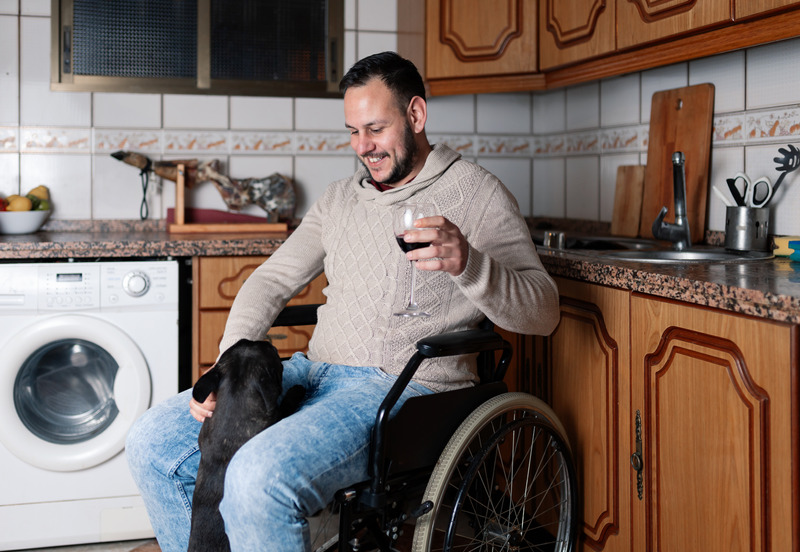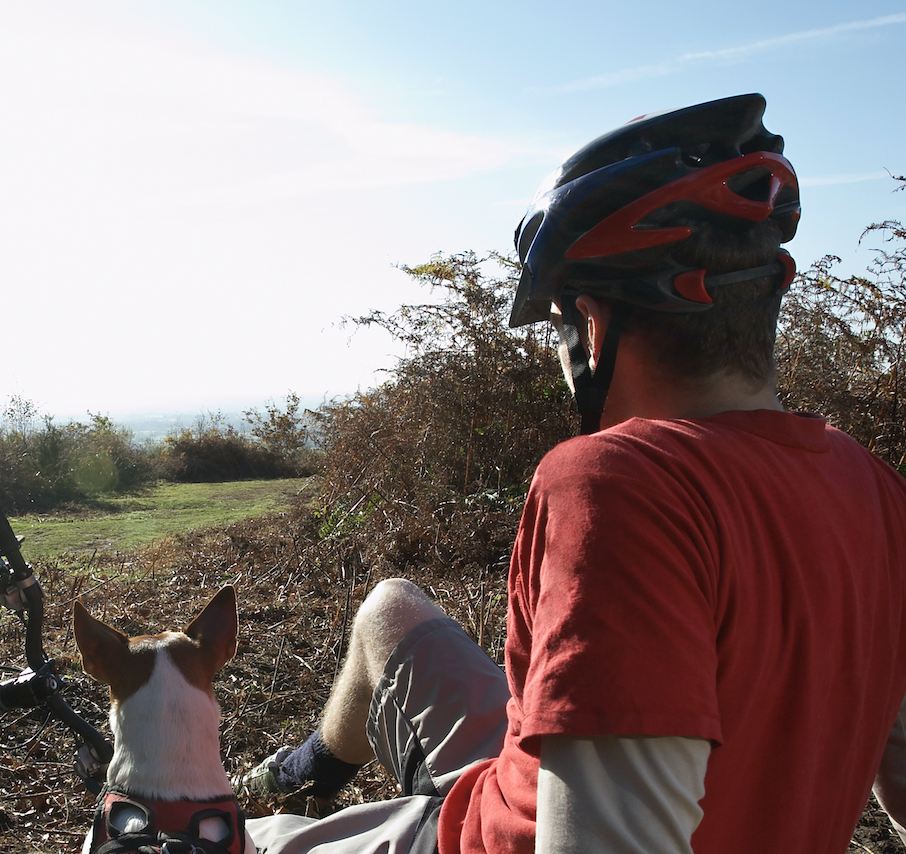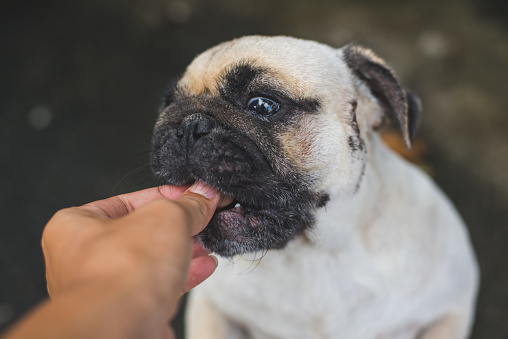- What Is Pet Therapy?
- Should A Therapy Animal Be A Dog?
- How Does Pet Therapy Work?
- Who Are the Participants In The Pet Therapy?
- What Is The Process Of Becoming A Therapy Dog?
- Is A Therapy Dog The Same As A Service Dog?
- What Is The Benefit Of A Pet Therapy?
- Who Can Benefit From A Pet Therapy?
- Are There Risks In A Pet Therapy?
- How Much Does A Pet Therapy Cost?
- Certification Organizations
- How To Prepare Your Dog To Become A Therapy Dog
- How Are Dogs Tested to Become a Therapy Dog with ATD?

What Is Pet Therapy?
Pet therapy is considered a guided interaction between an individual and a trained animal, which purpose is to help a person recover from or to deal with a physical or a mental disorder. These could be cancer, health disease, mental disorders...etc.The animal’s handler is also a participant in the pet therapy. The term also refers to an: “Animal-Assisted Therapy” (AAT).s. The pet therapy process happens in the form of a structured set of sessions that help people to reach specific goals in their treatment. AAT should not be confused with “Animal-assisted activities” (AAA), which has a more general meaning. AAA features casual meetings in which an animal and its handler connect to one or more people. The purpose of these meetings is to provide comfort or recreation. It is important to mention that pet therapy should not replace other treatments, that the person’s condition requires. It could be used as a complementary activity for the benefit of the individual. The type of therapy or animal used depends on a lot of factors like the person’s condition or the type of therapy that he/she provides. Animal type, size, age, breed, and behavior are some of the factors, that need to be considered so that the most suitable therapy type can be used.
Should A Therapy Animal Be A Dog?
In most cases, dogs and cats are preferred, but other animals like horses, guinea pigs, and even fishes can also be used for pet therapy.
How Does Pet Therapy Work?
A concept is known as the “human-animal bond” has been built during animal therapy. This concept refers to the desire of people to relate to animals and to interact with them. Having contact with a friendly animal may create a bond with the animal, which leads to a calming state in the individual.
Who Are the Participants In The Pet Therapy?
Participants in pet therapy are usually: the animal’s handler (in most cases he/she is also the animal’s owner), a doctor or other health care practitioner, and the person, for whom condition’s benefit the therapy has been provided. The handler typically brings the animal to sessions in that under the doctor’s control and guidance the person in need can achieve the goals of the therapy.
What Is The Process Of Becoming A Therapy Dog?
First, the handler has to go through an instruction course in order to get familiar with the proper ways of interacting with people and the types of therapies, that they may provide.
Animals may need to go through immunizations and physical exams, so that it can be proved, that they are healthy.
Among the tests that an animal needs to pass to become a therapy animal are also temperament tests. They have to prove that the animal will be well-behaved not only with their handler but also with other people.
Passing grades in obedience tests is another necessity for the animals used for pet therapy. The safety of all participants should be granted, as well as the best possible therapy for the particular case.
Handlers are typically trained by different organizations that mediate contact with health care providers. The handler, as well as the animal, needs to be certificated by these organizations.
Is A Therapy Dog The Same As A Service Dog?
No, both terms are not the same. According to ADA (Americans with Disabilities Act), therapy dogs are not qualified as service dogs. A service dog can be any dog that is individually trained to do work or perform specific tasks for the benefit of an individual with a disability, including a physical, sensory, psychiatric, intellectual, or other mental disability. The task(s) performed by the dog must be directly related to the person’s disability. Therapy dogs have no right to enter animal restricted areas (grocery stores, public transportation, etc). It is important to mention that ADA recognizes only dogs as service animals. It is unethical to attempt to pass off a therapy dog as a service dog for purposes such as flying on a plane or being admitted to a restaurant.
What Is The Benefit Of A Pet Therapy?
Interaction with an animal can be very beneficial either physically or mentally for the individual. Some of the benefits by using pet therapy can be:
Physically: could decrease blood pressure, cause calming effect because of the released endorphins, relieve pain, cause automatic relaxation response, that the act of petting.
Mentally: could decrease depression, feelings of anxiety, loneliness, isolation or boredom; increase socialization, feeling of comfort, motivation for faster recovering
Beneficial for literacy, as pet therapy could: help children focus better, improve literacy skills, provide non-stressful / non-judgmental environment, increase self-confidence, encourage the love of reading and learning in general
Physical Therapy could: increase joint movement, improve recovery time, provide motivation to move more, increase motor skills
Who Can Benefit From A Pet Therapy?
These can be people who deal with different types of physical or mental health issues, as:
people with cancer treatment, residents in long-term care facilities, children that have physical or dental treatments, people with chronic heart diseases, with dementia or other mental disorders, veterans with post-traumatic stress disorder, stroke victims or people with anxiety, as well as people who need to regain their motor skills.
Are There Risks In A Pet Therapy?
Yes, there are some risks. Most of them are related to safety and hygienic factors. Some people may be allergic to animals, especially to dogs. The fur and the paws of the animal may contain substances that cause allergy or illness. That is the reason why animals used in therapy programs go through strict health tests. Other people may just feel afraid or uncomfortable being around animals. There are also cases in which people develop a strong attachment to the animal, which may have a negative effect on the therapy. That could lead to low self-esteem or even depression.
With that in mind, we can not consider pet therapy beneficial for everyone. Whether it can be applied or not depends on many factors, as already stated in the beginning of the article.
How Much Does A Pet Therapy Cost?
An animal therapy may be prohibitively expensive for some people and it can reach thousands of dollars: 8.000$-10.000$.
Considering the costs some people decide to train their own therapy dog. Online courses getting more and more popular among many people due to the easy access to them and their affordable prices.
You can check our Therapy Dog Course here.
Certification Organizations
A dog must be certified by one of these organizations to be eligible to receive the AKC (American Kennel Club) Therapy Dog Title:
1. Alliance of Therapy Dogs (formerly Therapy Dogs, Inc.)
2. Bright and Beautiful Therapy Dogs
3. Love on a Leash
4. Pet Partners (previously Delta Society)
5. Therapy Dogs Incorporated (TD Inc.) – the new name is Alliance of Therapy Dogs
6. Therapy Dogs International
How To Prepare Your Dog To Become A Therapy Dog
The Alliance of Therapy Dogs (ATD) is one of the largest therapy dog training organizations in the US. They recommend that dog owner who wants to prepare their furry friend for a therapy dog need to follow some advice.
You need to socialize your pet as soon as possible. You can arrange meetings with other people that can be provided as often as possible and that are pleasant for your dog. You should remember to stop the meeting while you and your dog partner are still having a good time. Too much socialization may cause the opposite effect.
You need to take care of your dog’s trusting ability and find out ways to develop it. You can discover things that you and your fluffy friend like to do together. A variety of experiences like walks, hikes, playing in the park, at the beach..etc, are very important for gaining the puppy’s trust. He/she will know that your decisions are beneficial for them.
The participation of other family members in the training is very important for the socialization of the pup. It can show him/her that he/she may have new experiences regardless of the people, by whom he/she is surrounded.
It is very important for every dog handler to successfully determine their puppy’s ability to be a therapy dog
You need to notice whether your puppy is: more confident or depending on others; dominant or submissive; will he/she bring something on your command; is your furry friend too sensitive when being handled; is he/she too sensitive to noises; what is the physic of your dog- is he/she well-formed.
How Are Dogs Tested to Become a Therapy Dog with ATD?
“Tester/Observer (T/O) will monitor you and your dog during three visits to facilities that include two visits to a medical facility. During these supervised visits, the T/O will instruct you and your dog on the art of visiting and give you advice and guidance while observing you in action. If all goes well, the T/O will pass you and your dog and recommend you for certification and registration with ATD”.












